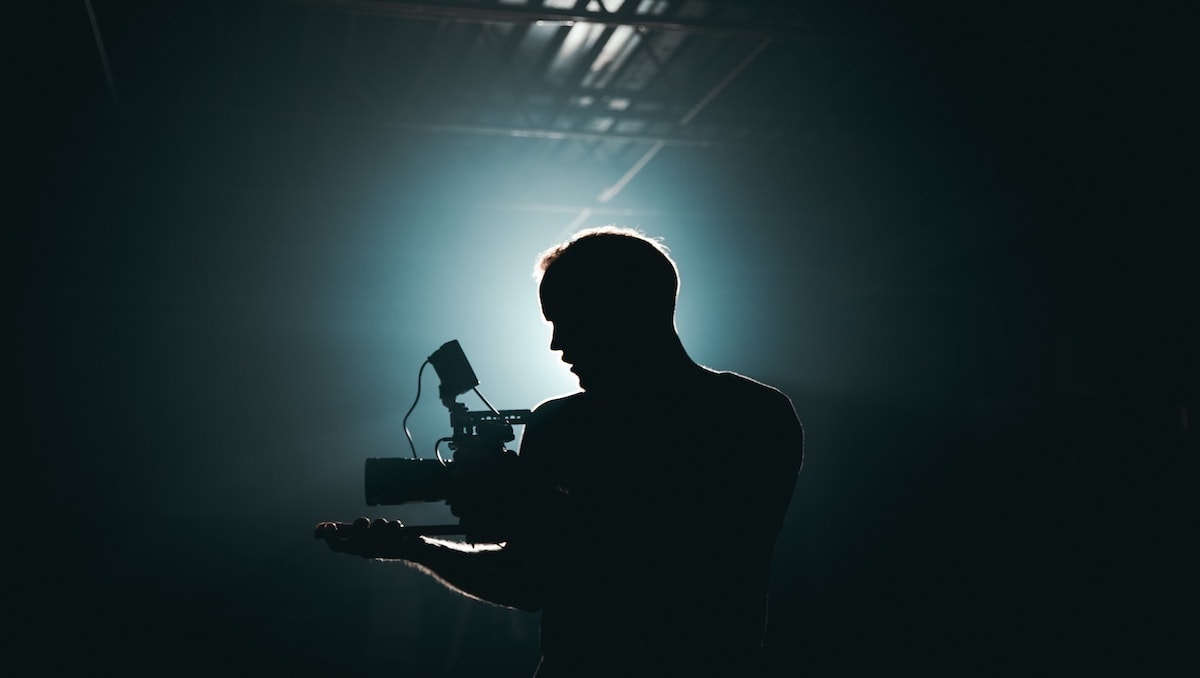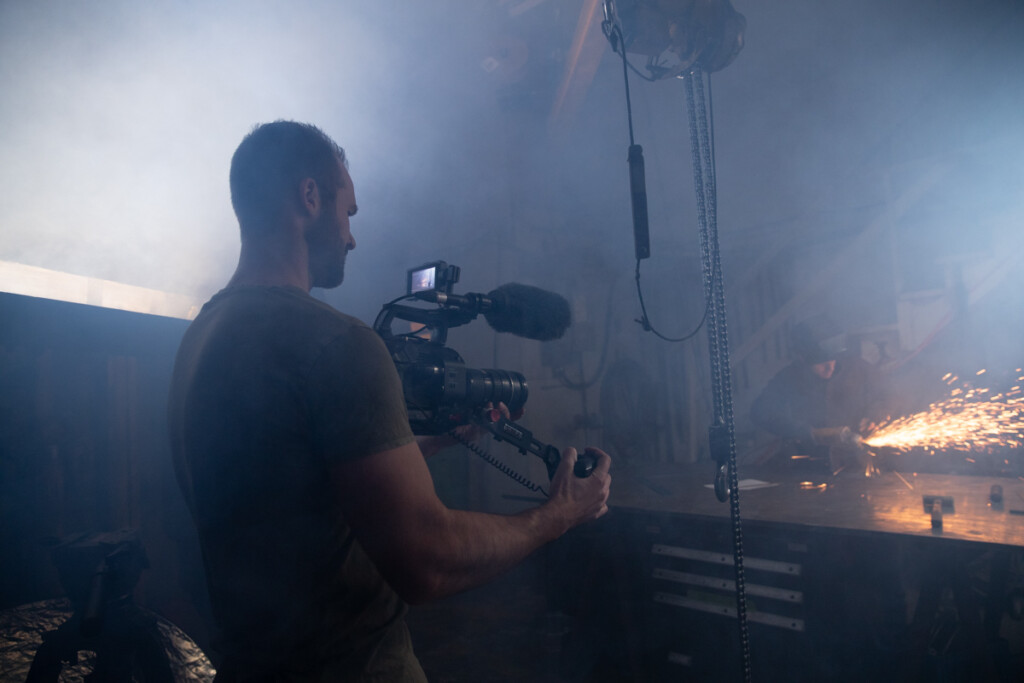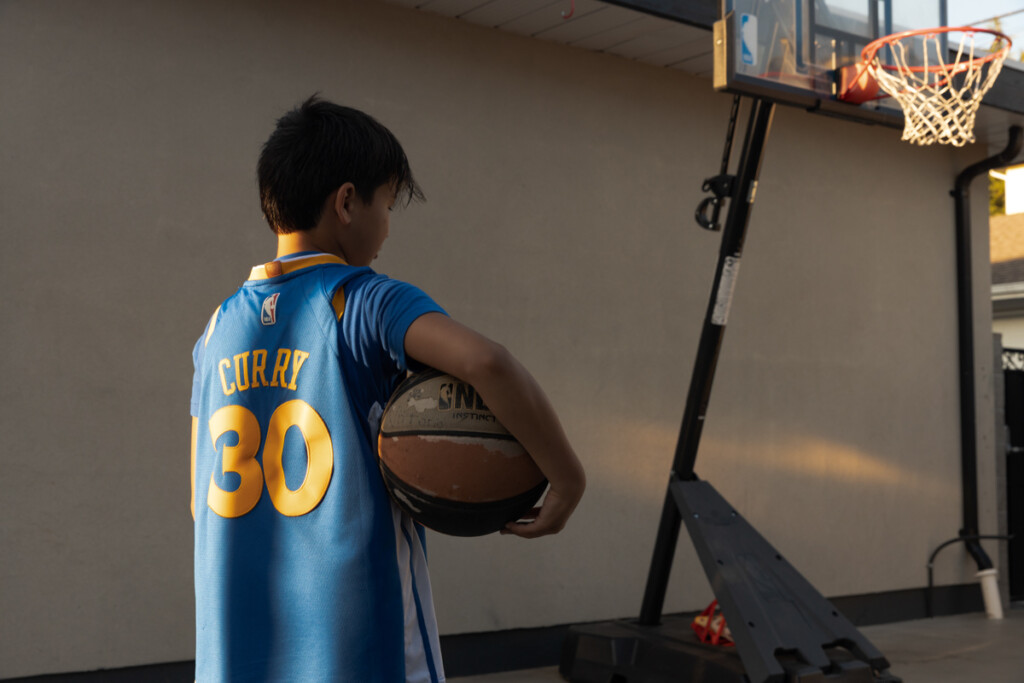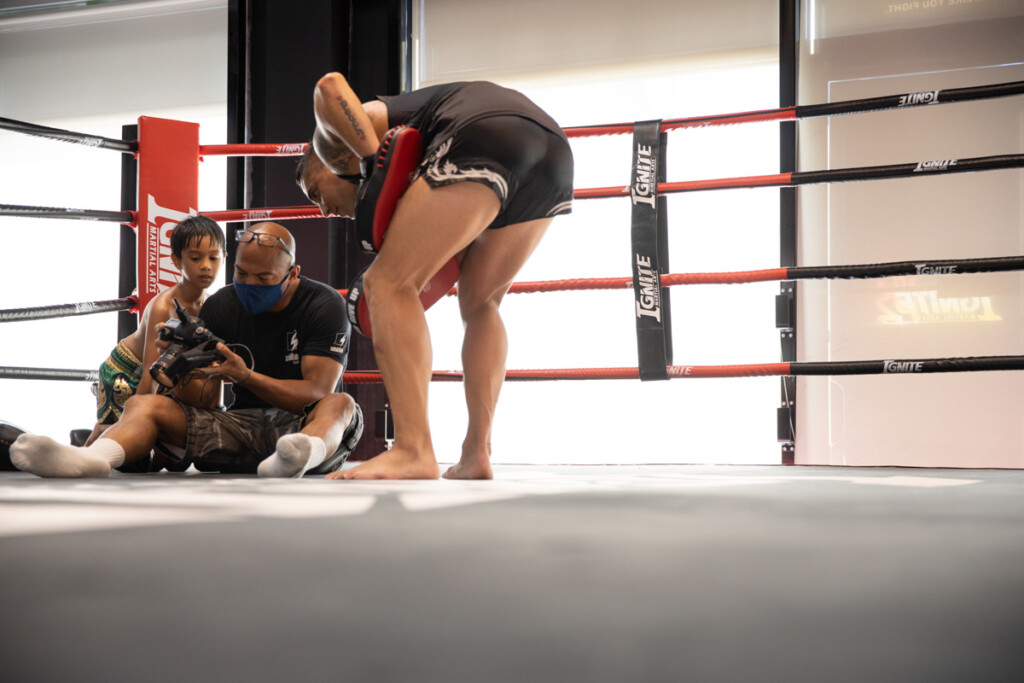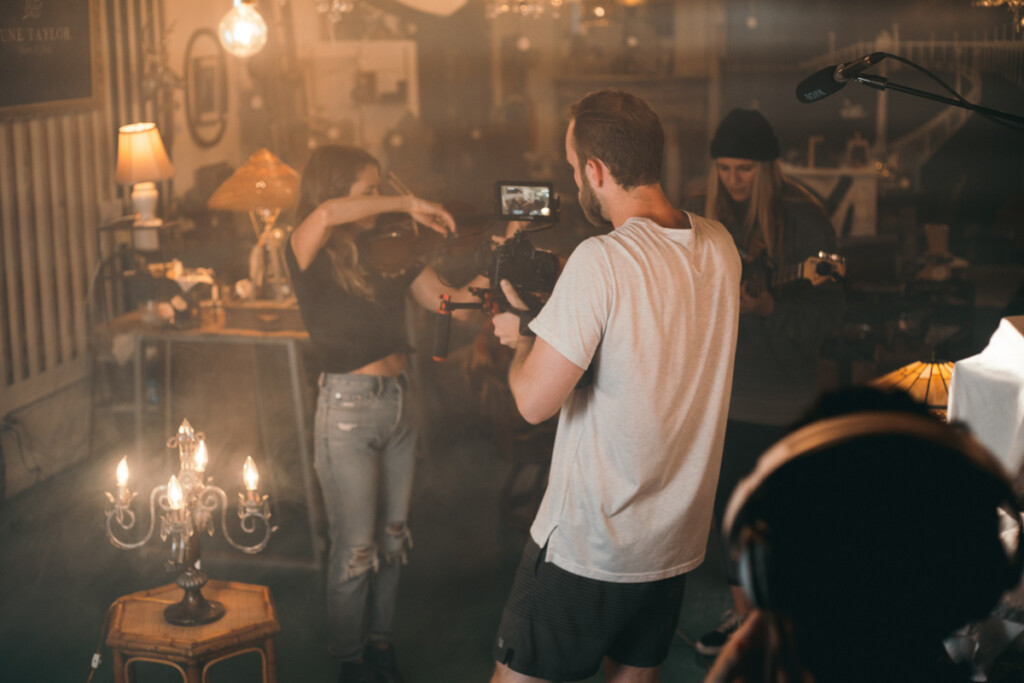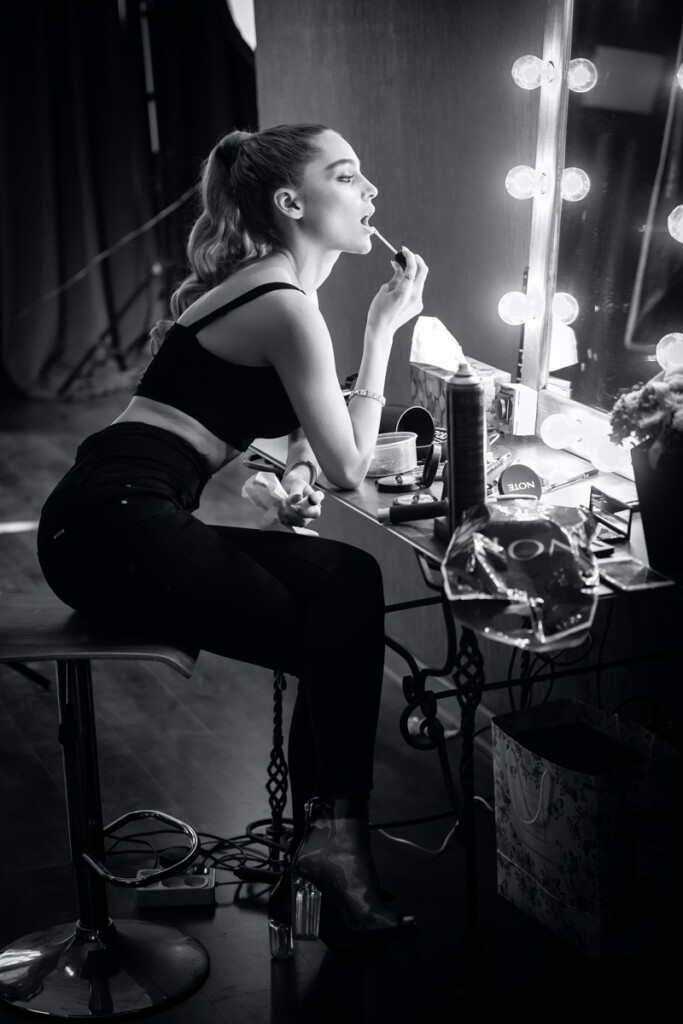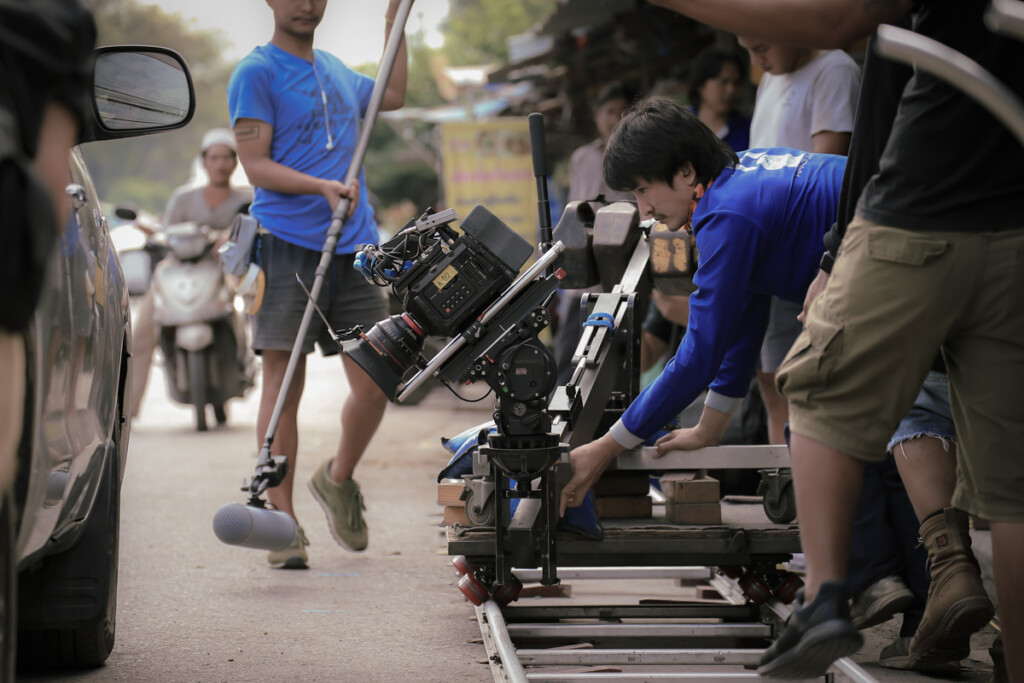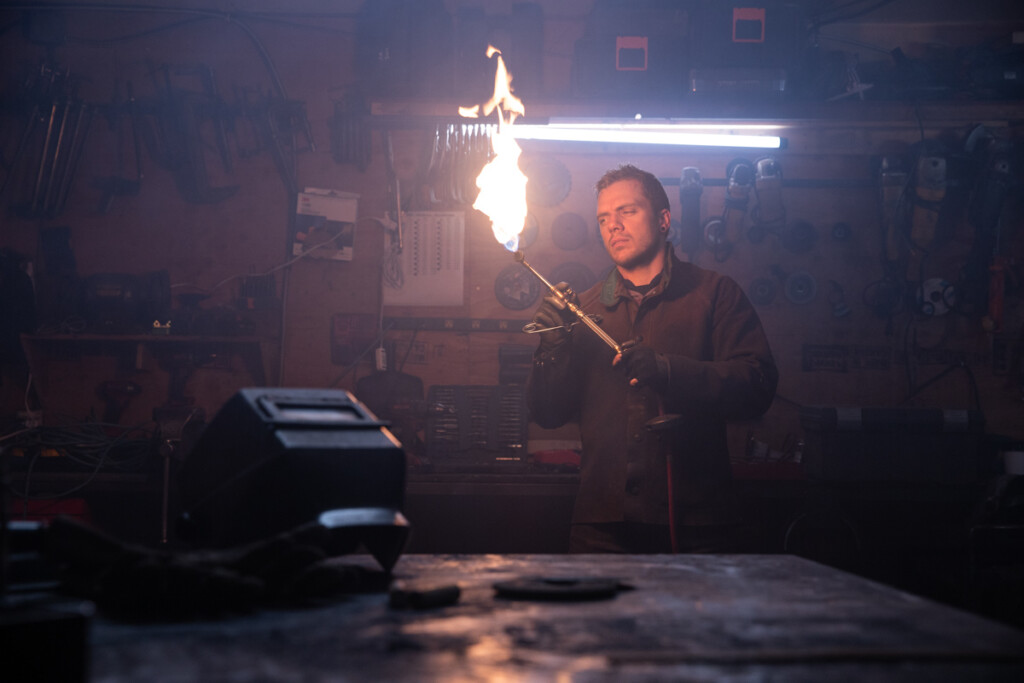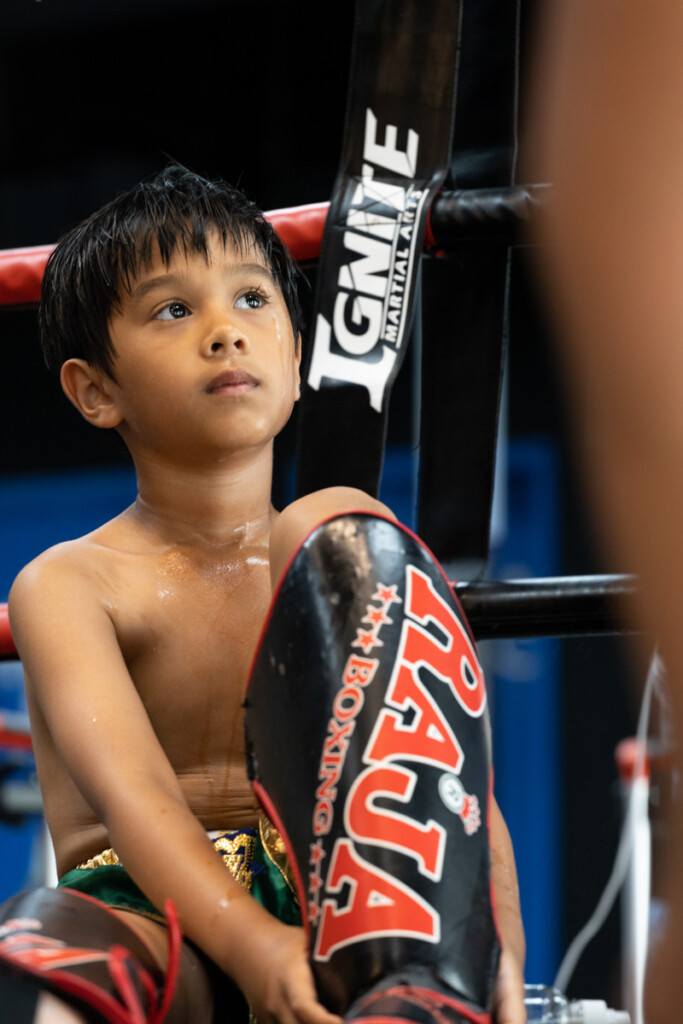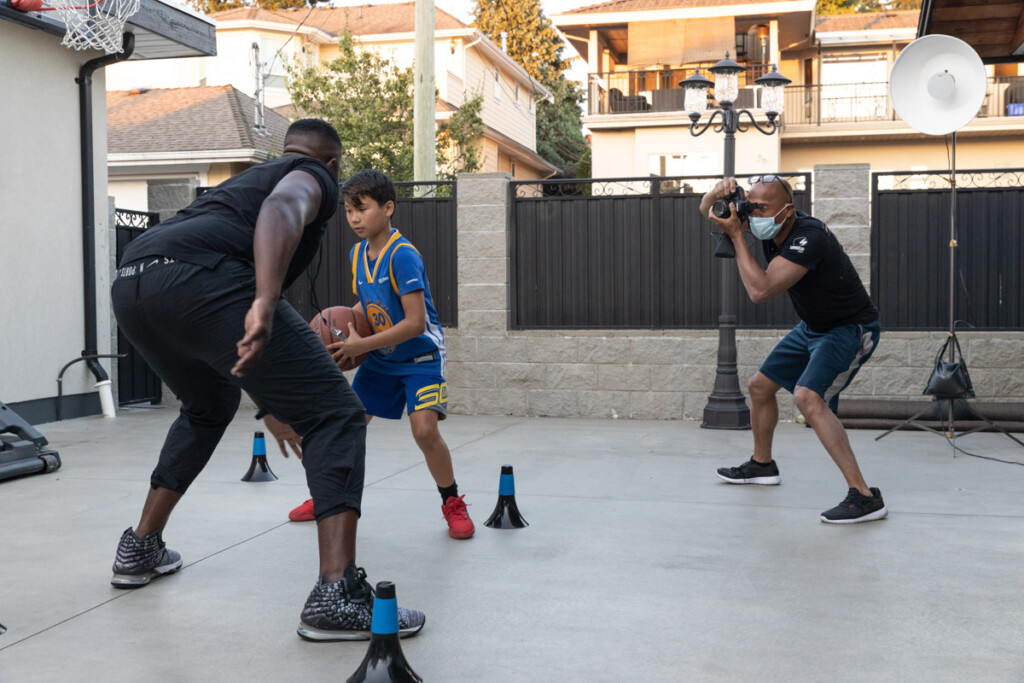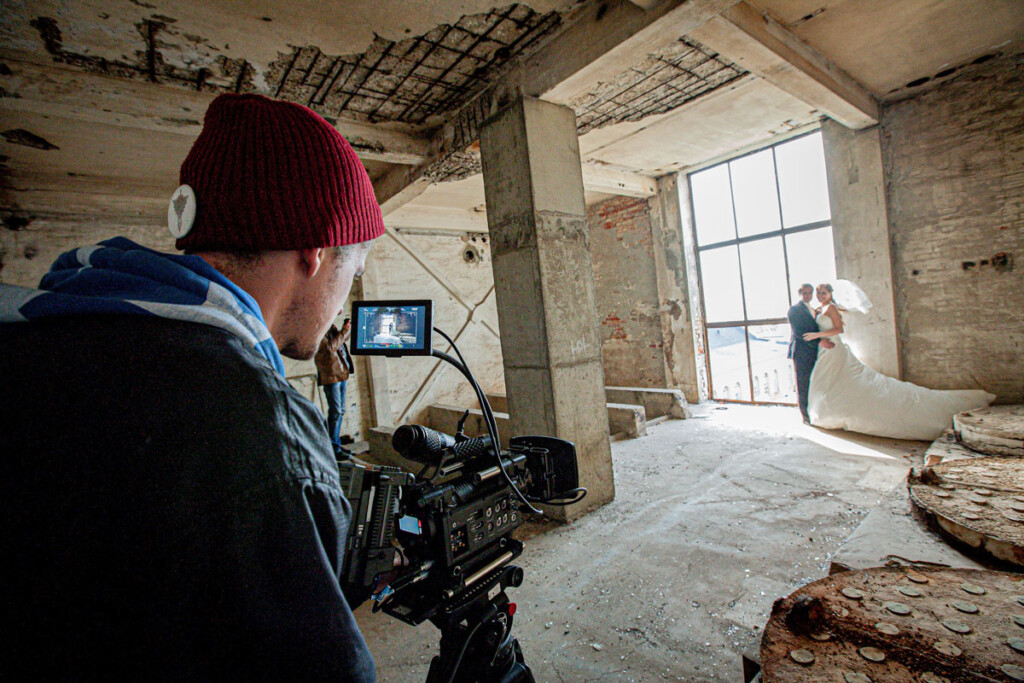How To Take Better Behind The Scenes Photos
Whether you’re photographing a film set, event setup, or other behind the scenes images, there’s a method to all the madness. A behind the scenes photographer is crucial for capturing the real moments that unfold during a shoot or event. It’s fast-paced, a lot is going on, but for us photographers, it can be a ton of fun!
If you’re about to do your first BTS shoot or are just looking for ways to improve, this post is for you. Here we’ll break down a few of the most important things to know as a behind-the-scenes photographer. With a few new tips and tricks under your belt, I guarantee your shots will start to improve.
Let’s get into it!
10 Actionable Behind The Scenes Photography Tips
You’ll learn a lot from every shoot you do as a behind the scenes photographer. However, you can spare yourself some of the awkward learning experiences by using these tips I’ve learned over time. Hopefully, these ideas and tips will help you avoid some of the big mistakes I first made myself!
1. Use A Semi-Automatic Camera Mode
Since you’re shooting people moving around, setting up gear, or candid moments, you never know where your lens will be pointed. If you’re using manual mode, it will be challenging to always get the right exposure. One minute you may be photographing near a light, while the next, you’re pointed towards a dark corner. In the time it takes you to futz around with your camera settings, the moment’s gone.
That’s where semi-automatic camera modes come into play.
These camera modes are known as Aperture Priority or Shutter Priority mode. Rather than manually choosing all your settings, you only have to control the important ones. In this case, that’s either the aperture or the shutter.
For most behind the scenes photos, I like to use Shutter Priority (Tv or S). Since I’m more concerned about capturing movement and keeping everything crisp, I want to ensure I have the proper shutter speed. In this camera mode, you can manually control the shutter while your camera takes care of the rest. So when you shoot between a bright and dark area, your camera will automatically correct other settings based on your shutter speed.
You can learn more about semi-auto camera modes in this post.
2. Don’t Bother With Prime Lenses
There’s rarely a time where you’ll have the luxury of setting up, picking your favorite lens, and snapping the perfect photo. Instead, you’re constantly on the move trying to get photos wherever you can. If you’re using a prime lens, you end up limiting yourself significantly.
With a prime lens, you have to move your feet to change the composition of your shot. With lots of people, gear, and lighting stands in your way, that’s not always the best idea. With a zoom lens of some sort, you can get more variety in your shots without ever moving the camera.
Although I share a full list of my favorite lenses for photography here, I would recommend a mid-range wide-angle zoom like the Canon 24-70mm. This focal range offers a nice variety for behind the scenes photography. Since you’re often in small spaces, you can still get great shots with this type of lens.
3. Focus On Reactions
The best behind the scenes photos that you’ll take are candid reactions from actors, models, or crew members. Things that showcase real emotion are a lot of fun to look back on. By getting good at people watching, it gets easier to know when a reaction may come.
Although lots of behind the scenes images showcase bubbly fun and laughter, don’t be afraid to capture other emotions. Things like someone working really hard, focusing intently, or lost in thought. Those are all great things to look for when you’re capturing BTS photos.
4. Pay Close Attention To Your Environment
You must be always aware of your surroundings when working on a set. If you get tunnel vision during a certain shot, you might find yourself in the way of others or even in the background of a scene. Both are something you’ll want to avoid whenever possible, for obvious reasons.
Besides avoiding getting in the way, paying attention to your surroundings can help you find more interesting shots. Perhaps there’s a balcony above that’d offer a unique perspective. New ideas on where you can find a great BTS photo will only come when you’re keenly aware of your surroundings.
Keep your head on a swivel and look for where you won’t be in the way but can still capture a great shot.
5. Pretend Like You’re Invisible
A truly professional behind the scenes photographer will seem invisible when they’re shooting. When it comes time to share your photos, people will be shocked that you managed to get the shots you did.
To seem invisible is simple. You just have to be more aware of other people than they are of you. As they’re deep in thought planning a shot or adjusting the lighting, you can anticipate their movements and get out of their way. Especially when it comes time to actually shooting, this is very important. Nothing gets people more annoyed than when you’re making their job harder.
With that said, you don’t always have to be invisible. It’s fine to talk with other crew members, models, or whoever else while you’re shooting. It’s just important to know when and when not to do so. During setup and shooting times, pretend like you’re not even there. However, during a lull in the action and not much is going on, it’s more acceptable to strike up a conversation.
6. Understand The Process
No matter what you’re shooting behind the scenes photos for, your job will be a lot easier if you understand the process. For example, if you’re working on a film set, it’s very useful to understand the steps from blocking, lighting, rehearsing, and shooting. That way, you can identify which stage of the process the set is in and whether or not it’s time for you to work.
If you don’t understand it all yet, you’ll slowly get a knack for it after spending more time on set. You’ll start to see how things flow and what types of photos you can capture at each stage.
If you’re completely new, don’t be afraid to ask someone when they don’t look busy. Some sets can be harder to understand, so a little advice can go a long way!
7. Shoot With A Continuous Shutter
Since you never know when the perfect moment will arise, make sure to use a continuous shutter. That way, you can get a few different frames of the same photo and guarantee yourself the perfect one.
For example, you might get someone mid-blink in a photo, which makes it unusable. If you had shot with a continuous shutter, you would have captured the blink and the moment after where you’d find a more suitable image. This also makes it a lot easier to capture truly candid reactions. If you feel like a reaction is coming, you can take a series of photos to capture the entire moment unfolding.
Using a continuous shutter is a simple trick that makes photographing behind the scenes so much easier. I’d highly recommend trying it for yourself.
8. Use Continuous Autofocusing
Since time is of the essence, autofocus is the obvious choice for behind the scenes photography. However, it’s important that you use continuous autofocus rather than single-shot.
If you aren’t familiar with the difference, single-shot autofocus will focus your image when you half-press the shutter. The problem is, once it sets focus, it won’t adjust it as you or your camera moves. Instead, you’d have to half-press the shutter again to reset the focus point. When you’re photographing something moving around, this is not ideal.
With continuous autofocus, your camera will track the movements of an object and adjust the focus accordingly. Rather than constantly half-pressing your shutter to reset the autofocus, you can do it once, and your camera takes care of the rest.
On Canon cameras, this focus function is called AI-Servo, while on Nikon and Sony, it’s called AF-C.
9. Be Ready To Move At Any Moment
When there’s a lot to shoot in a day, productions can move sporadically and very quickly. Whether it’s resetting stands and equipment on set or moving locations entirely, you never know where things are headed. That’s why you must be able to move at a moment’s notice.
The easiest solution to this is to keep all your gear in a single camera bag. When you’re shooting, only take out what you need, and store your bag somewhere safe nearby. That way, you have a low profile when you’re walking around but still have all your equipment if you need something.
If you have a lot of additional gear that you carry in cases or a separate bag, it may be worth purchasing a small cart to move things around in. I’ve seen many on-set photographers store all their gear in a small wagon. When it comes time to move, they simply wheel it over to wherever’s necessary.
There are various ways that you can be ready to move at all times, but it comes down to personal preference. Try a few different organizational methods and see which one makes you the most efficient.
10. Don’t Get Hung Up On Absolute Perfection
When you’re not in control of a shoot, it’s hard to get the perfection you’re looking for. As photographers, we love to be in control and make the vision in our heads come to life. Unfortunately with behind-the-scenes photography, that’s not always the case.
Rather than getting frustrated from not getting the shots you’re looking for, make do with what you have. There’s always a way to find a great photo; it just takes some creative thinking or unique angles in some cases.
So those are 10 tips for behind the scenes photography to help you take better photos and look more professional. Behind-the-scenes photography is a lot of fun always offers something new. With different locations, crew members, models, and actors, it’s a cool environment to be in. With these tips, you’re now ready to start snapping up a storm and blow people away with your awesome candid imagery.
Happy Shooting!
– Brendan 🙂

